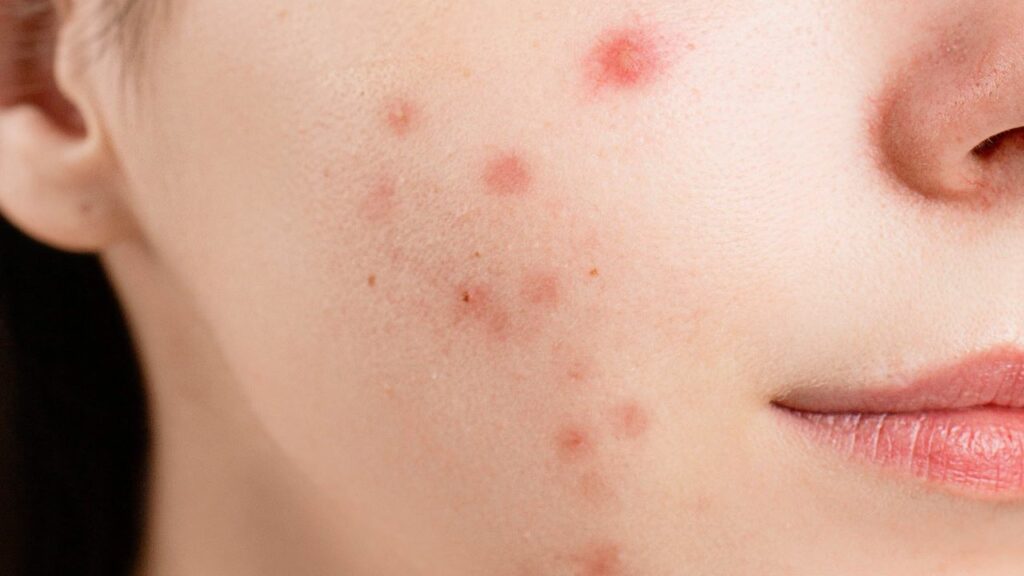Diving into the realm of skincare treatments can often feel like navigating a maze, especially when it comes to discerning the number of sessions required for optimal results. Among these treatments, chemical peels have gained popularity for their ability to revitalize and refresh the skin. However, the question of how many treatments are needed often arises.
We welcome you to our detailed guide on ‘How Many Chemical Peels Do You Need.’ This guide is designed to dispel any confusion surrounding this topic and equip you with the knowledge necessary to make informed decisions about your skincare routine.
Chemical peels function by gently exfoliating the outermost layer of the skin, encouraging new cell growth and unveiling a smoother, more glowing complexion beneath. These treatments have been found effective in addressing a variety of skin concerns, from fine lines and wrinkles to acne scars and hyperpigmentation.
In the subsequent sections, we will delve deeper into the factors that determine the number of chemical peels you may need. Additionally, we’ll explore various types of peels and their unique benefits.
What is a Chemical Peel and How Does it Work?

A chemical peel, as the name indicates, is a non-invasive dermatological procedure that utilizes a specific chemical solution with the aim of gently exfoliating the topmost layer of your skin. This treatment method is designed to facilitate the ‘peeling’ off of the treated skin, which in turn unveils a fresh, new layer of skin beneath. This newly revealed skin layer is usually smoother, less wrinkled, and more vibrant, giving your complexion a noticeably refreshed look.
This procedure is performed by a qualified dermatologist or a trained skincare professional who has extensive knowledge and experience in handling various skin types and addressing diverse skin concerns. The process of a chemical peel involves inducing a carefully controlled injury to the skin. While this may sound intimidating, it’s a strategic move designed to ignite the body’s natural healing process.
Once this healing process is triggered, the skin begins to regenerate and renew itself. Healthier, new ones replace the old, damaged skin cells. As the outer layer of dead skin cells peels off, you’re left with a revitalized complexion that radiates health, youthfulness, and an enviable glow.
The magic of chemical peels lies in their ability to accelerate the skin’s natural turnover process. By removing the dull, damaged surface layer, they allow the radiant, fresh skin underneath to come to the fore. Furthermore, the process of healing and regeneration that follows a peel can also stimulate collagen production, further enhancing the skin’s texture and elasticity.
What is the Recommended Number of Chemical Peel Sessions?
The frequency of chemical peel treatments isn’t a one-size-fits-all scenario. It varies significantly depending on factors such as the individual’s skin type, the specific skin concern being addressed, and the intensity of the peel.
For mild peels, which are typically less aggressive, skincare professionals often recommend a series of 3 to 6 treatments. These sessions are usually spaced about a month apart to allow the skin adequate time to heal and regenerate for optimal results.
On the other hand, medium to deep peels are more intensive. They penetrate deeper into the skin and may only require a single session. However, the exact number should be determined after a thorough consultation with a skincare professional to ensure safe and effective treatment.
5 Benefits of Chemical Peels to Unlock Your Radiant Beauty
Chemical peels are not just about enhancing your aesthetic appeal, they offer a plethora of benefits that contribute to your overall skin health, unlocking your radiant beauty from within.
Improved Skin Texture and Tone
Chemical peels excel at removing the top layer of dead skin cells, a process that can significantly improve the texture and tone of your skin. Post-treatment, your skin will feel noticeably smoother and appear more even-toned, giving you a rejuvenated look.
Reduction of Fine Lines and Wrinkles
One of the key advantages of chemical peels is their ability to stimulate collagen production and promote cellular turnover. This leads to a reduction in the appearance of fine lines and wrinkles, contributing to a more youthful and vibrant complexion.
Effective Acne and Scar Treatment
Chemical peels can be a potent weapon in the fight against acne and acne scars. The treatment works by unclogging pores and removing the outer layer of damaged skin, reducing the appearance of scars and preventing future breakouts.
Enhanced Absorption of Skincare Products
Post-peel, your skin becomes more receptive to skincare products. With the barrier of dead skin cells removed, your favorite serums and moisturizers can penetrate deeper into the skin, enhancing their efficacy and maximizing their benefits.
Brighter, More Radiant Complexion
By shedding the dull, dead outer layer of skin, chemical peels reveal a brighter, more radiant complexion underneath. This treatment can give you a healthy glow, boosting your confidence and making your skin look as vibrant and youthful as it feels.
Treatable Conditions with a Chemical Peel

Chemical peels are incredibly versatile skincare treatments capable of addressing a multitude of skin conditions. These treatments work by gently stripping away the top layer of the skin, revealing a healthier, rejuvenated layer beneath. Here’s a closer look at three common skin issues that can be effectively mitigated with the help of a chemical peel.
Acne and Acne Scars
One of the most common uses of chemical peels is in treating acne and acne scars. By unclogging pores and reducing inflammation, chemical peels can significantly decrease the appearance of active acne. Moreover, they stimulate faster skin healing, which can smooth out the skin texture and lessen the visibility of acne scars. Consequently, regular sessions can lead to a markedly clearer and smoother complexion.
Fine Lines and Wrinkles
Chemical peels also play a crucial role in anti-aging skincare. The exfoliating action of the peels prompts the skin to produce more collagen, an essential protein that gives skin its elasticity and firmness. This surge in collagen production helps fill in fine lines and wrinkles, resulting in skin that appears firmer, plumper, and more youthful.
Hyperpigmentation
Hyperpigmentation, manifesting as sun spots, age spots, melasma, and other forms of uneven skin tone, can be effectively treated with chemical peels. The treatment works by removing the skin layers where excess pigment has accumulated. As a result, the skin tone becomes more balanced and uniform, and any dark spots or patches are significantly lightened.
How Long Until You See Visible Results
The time it takes to see visible results from a chemical peel can vary greatly, depending on the type of peel used and the specific skin condition being treated. Generally speaking, you may notice some improvement after just one treatment. However, for optimal results—especially for more severe skin conditions—a series of treatments may be necessary.
During your consultation, your skincare professional can provide a more accurate timeline based on your individual skin needs and goals.
The Do’s and Don’ts After a Chemical Peel Session
After undergoing a chemical peel, proper post-treatment care is vital to ensure the best possible results and to minimize potential side effects. Here are some crucial do’s and don’ts to remember following a chemical peel session:
Sun Protection
Do ensure you protect your newly exfoliated skin from the sun by applying a broad-spectrum sunscreen with an SPF of at least 30. Don’t expose your skin to direct sunlight for extended periods, as this could lead to sunburn or hyperpigmentation.
Hydrating Your Skin
Do maintain adequate hydration of your skin by using a gentle, non-comedogenic moisturizer suitable for your skin type. Don’t use harsh or drying skincare products that could potentially irritate your sensitive post-peel skin.
Maintaining a Skin Care Routine
Do follow a simple, gentle skincare routine, which includes cleansing, moisturizing, and protecting your skin. Don’t use exfoliating products or tools until your skin has fully healed post-peel, as these could cause irritation or damage to the new skin cells.
Reveal Your Radiant Skin with Honey Skincare Studio
Now that you’ve explored our comprehensive guide, you’re already equipped with the knowledge to make an informed decision about your skincare routine. Remember, the journey to radiant skin is unique for each individual, and the number of treatments required can vary based on your specific skin type and concerns.
Chemical peels offer a host of benefits, including improved skin texture and tone, reduction of fine lines and wrinkles, and effective acne and scar treatment. If you’re ready to unlock your skin’s potential and reveal a more radiant, youthful complexion, book a consultation with Honey Skincare Studio today.

